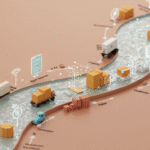My friend David Plotkin, who is the Data Governance Manager of AAA of Northern California, Nevada, and Utah, reached out to me recently to restate something I’d said last summer at the MIT Information Quality Industry Symposium. He asked me to tell him again what I’d said about data governance not being about governing data at all.
I don’t know about you, but I’ve slept a whole lotta times since last July. That’s a whole lotta forgetting. But his comment struck a bell – it sounded like something I’d say, but it also sounded like only part of the equation.
My friend David Plotkin, who is the Data Governance Manager of AAA of Northern California, Nevada, and Utah, reached out to me recently to restate something I’d said last summer at the MIT Information Quality Industry Symposium. He asked me to tell him again what I’d said about data governance not being about governing data at all.
I don’t know about you, but I’ve slept a whole lotta times since last July. That’s a whole lotta forgetting. But his comment struck a bell – it sounded like something I’d say, but it also sounded like only part of the equation.
So I wrote back about the difference between Big G Governance (people-focused activities such as setting policy, priorities, decision rights, control specifications, etc) and little g governance (data-focused activities such as implementing and monitoring controls). (Spoiler alert: this meme features strongly in the DGI Data Governance Framework update, to be released in the coming weeks.)
Thanks, David said. But not what our previous discussion was.
David has one of the most important qualities of a Data Governance Manager: gentle persistence. He makes you want to do what is right, and he makes it easy to see what is right. Without ever telling me how he was going to use this new meme, he let me know that he was going to use it, that it would be very useful in an important situation. He made me imagine the impact, knowing that I’d want to help if I could.
So I dug through my memories (argh!!!) until I remembered the context and then the content, and I answered him. I’ve included the answer below. But first, a request: Please help me fill in some blanks. What else do we do to/with/for data that needs to be controlled? Does a list of verbs exist that we can access?
Is Data Governance really about governing data?
Well, on the one hand, we need to control data. hence, the “little g” view that data governance is about governing – or controlling – data.
On the other hand, data doesn’t do much of anything on its own. It behaves according to the choices people have made about how it is to be structured, stored, moved, duplicated, reshaped, contained, labeled, categorized, accessed, shared, protected, distributed, hidden, indexed, transformed, extracted, loaded, captured, collected, accepted, rejected, validated, specified, created, updated, deleted, and so on.
The human side of data governance is about agreeing to the rules and rules of engagement that people (managers, architects, data workers, others) adhere to as they translate policy to practice, designing, implementing, and monitoring data-related controls. It is this human side of data governance that tends to require the attention of our data governance managers, because if we don’t work past human obstacles, we won’t suceed in effectively addressing the “physics” of controling data itself.





